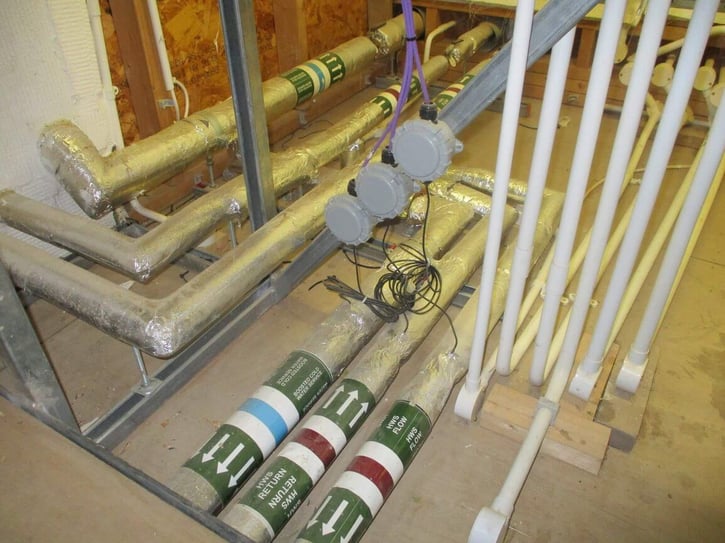Remote monitoring of water temperatures is far from new. However, in the recent past seen as a lazy method of monitoring. An often-raised question is about a system’s reliability as well as the true monitoring or trending of the water system.
If we are honest with ourselves how many of us trend our water temperatures or attempt to gain any meaningful information over the system condition? If you don’t do it now simply adding a remote monitoring service may just help fill a gap. However, if we don’t understand monitoring or trending what have you gained?
Understanding remote monitoring trending
The HSE, Healthcare as well as other standards and guidance documents all note the need to trend your water systems temperatures. They then note water should be cold, basically lower than 20oC and preferably not ice or lower than 1oC. Hot, they note, should be between 50-60oC or in healthcare 55-60oC.
These statements have, from experience, often caused some monitoring specialists to note temperatures over 60oC as an issue, or that they have recorded that they have adjusted the temperature stating safety as the reason. So, we should question if we know the parameters and if we are within these zones then what is there to manage? Water is not complicated so managing and trending temperatures should be simple.
Cold trending
When managing any item, you must have a rule or measuring stick. This is achieved by taking the incoming main temperature. This should be taken after you have allowed the incoming main to refresh to its lowest temperature within 2 minutes. Considering BS7592: 2022 Sampling for Legionella guidance. Using a cup/beaker or suitable container, allow the thermometer to be submerged in the water. Note taps fitted with a straightener or aerator may supply a 50% air-to-water mix reducing the accuracy of any result.
The incoming temperature now becomes the target, (Note HTM 04-01 Safe water in healthcare premises Part A guidance on variances) the tank (Booster) serviced from this main should be the same or refresh to this target within no greater than 15 minutes of the system’s use. You should then allow no greater than +2oC of this supply across the primary circuit (the smaller the property the less the gain) with secondary (Cold Water Down (CWD)) tanks being no greater than +2oC within its storage and a further +2oC at the furthest outlet.
The target is to manage and maintain the supplier’s water as wholesome (fit for human consumption) because it is a basic requirement of the HASAW act i.e., Welfare
Hot trending
The method of taking the temperatures is the same as for cold only the variance and reasons change.
The flow temperature now becomes the target, (again note HTM 04-01 over variances) the cylinder/calorifier/PHE (Booster) should be the same as the storage. The storage should be as set by the installer/O&M settings, and refresh to this target during peak demand to the O&M settings routinely no greater than 30 minutes of the system’s use.
Hot water is a little complicated in that it has two influencing areas. Temperature and pressure for every +10oC over 50oC you gain a bar in pressure. Hence the importance of not allowing a water system to be lower than 50oC or lose more than 10oC.
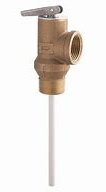

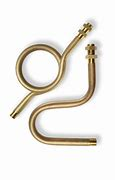 So as we gain in temperature to 50-60oC we get 1 Bar, 60-70oC 2 Bar and as it gets hotter say 80oC we get 3 Bar with safety devices look to kick in such as Pressure Temperature Valves (They are not dead legs, (removal and changes to these on a vessel should follow ACoP L122) nor are they areas which should be used for routine temperature monitoring).
So as we gain in temperature to 50-60oC we get 1 Bar, 60-70oC 2 Bar and as it gets hotter say 80oC we get 3 Bar with safety devices look to kick in such as Pressure Temperature Valves (They are not dead legs, (removal and changes to these on a vessel should follow ACoP L122) nor are they areas which should be used for routine temperature monitoring).
The HTMs again note the criticality of valve failure due to pressure loss by noting monitoring between 55 and 60oC. This is due to valve seal/seats having a working variance routinely +/-2oC of the systems set point. For example a TMV has an operational variance of 10oC, and the valve is set to 42oC. 42+10 =52oC, variance =2oC =54oC hence HTM noting 55oC. This variance should be applied to the water system. i.e., Water storage is at 64oC, to maintain balance you should not allow the system to drop below 55oC (64oC is routinely seen as the storage temperature in healthcare).
Trending via a remote system
Now that you have a rudimentary approach or understanding of trends you can look at remote systems and ask the right question as some systems offer awareness of balancing primary and secondary flow variances. 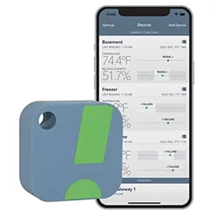 By understanding the needs which you should be measuring across your systems you can now look to eliminate suspected low-use areas or identify new areas of concern, especially in areas utilising mixing points such as Thermostatic Mixing Valves (TMV) allowing crossflow.
By understanding the needs which you should be measuring across your systems you can now look to eliminate suspected low-use areas or identify new areas of concern, especially in areas utilising mixing points such as Thermostatic Mixing Valves (TMV) allowing crossflow.
However, you can also see the benefits of using a remote system which allows 24/7 monitoring of primary and secondary flow and return circuits as they offer accurate day-by-day information at a fraction of the cost of what it would be for staff to emulate the information at your fingertips in an app.
Remote Monitoring System
These have progressed to such a point that you can phone a taxi! They not only offer continuous monitoring of temperatures but can also note pipework water movement such as flushing times or systems activity including outlet use. Serious big brother info. This, for FM suppliers, is a godsend as the client can be patched into the systems allowing them live updates.
Is there no end to the greatness and benefits of remote trending?
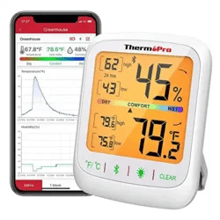 The answer again lies with what you are looking to achieve. If it’s to gain a simple picture or offer proof of temperature monitoring within the HSE’s minimum guidance, then ask what size of property I am looking after. If it’s small and uncomplicated, staff and a calibrated thermometer should do the trick (but then need to manually trend the information).
The answer again lies with what you are looking to achieve. If it’s to gain a simple picture or offer proof of temperature monitoring within the HSE’s minimum guidance, then ask what size of property I am looking after. If it’s small and uncomplicated, staff and a calibrated thermometer should do the trick (but then need to manually trend the information).
If you have a wide area, especially if areas are remote or staffing needs are extensive, then considering the use of a remote system may be the answer or at least offer some benefits. This is especially so in poor weather when staff safety in reaching remote areas could be challenging. Similarly in the summer with holiday traffic impacting routes.
Remote Monitoring Considerations
Remote monitoring is not the holy grail of temperature monitoring. It’s like the use of a point of use (POU) tap filter, it offers assistance. The need to challenge and confirm the remote system is operating correctly will need to be undertaken as it is possible the remote sensors will not be UKAS accredited.
The operating systems (WIFI/Bluetooth/power/batteries etc) introduce a secondary monitoring need including the periodic planning of power changes and associated costs or the upkeep of a systems licence capable of monitoring all the system’s needs. Reviewing these needs, especially when building changes have been undertaken, is important.
Technology itself brings its issues.
You may find the latest PC or phone is offered as the operating systems. However these operating systems can outgrow their operational use which could influence the systems readers or WIFI system just invested in. Basically a serious chunk of your budget needs you need to consider the longevity of the system or how it will be maintained/updated to meet with the next version of a PC/App platform.
Remote monitoring can be undertaken to embrace the future and improve monitoring, and as with all budgets, make cutbacks. You may need to think twice about looking for staff cuts as Covid has taught us all one thing - staff are reluctant to return to employers who fail to see the true value they offer.
Computers and systems are only as good as the information you set into the plan. Periodic testing of the systems using a calibrated thermometer should be a focal point of our revised plan. Improving the awareness of the staff to understand trending fully is essential. Unlike a computer which simply says NO, a well-trained engineer can be taught to think, adapt and quickly change to the system’s needs.
Feel free to reach out if you have any questions about the issues mentioned above or if you would like to consult with one of our experts on water hygiene.
Editors Note: The information provided in this blog is correct at the date of original publication – February 2023.
© Water Hygiene Centre 2023
(c) – Note: To prevent any interpretation of product endorsement by the WHC. All images are via Google- Monitor Temperature Remotely: Our 5 Best Picks by JG WAL


